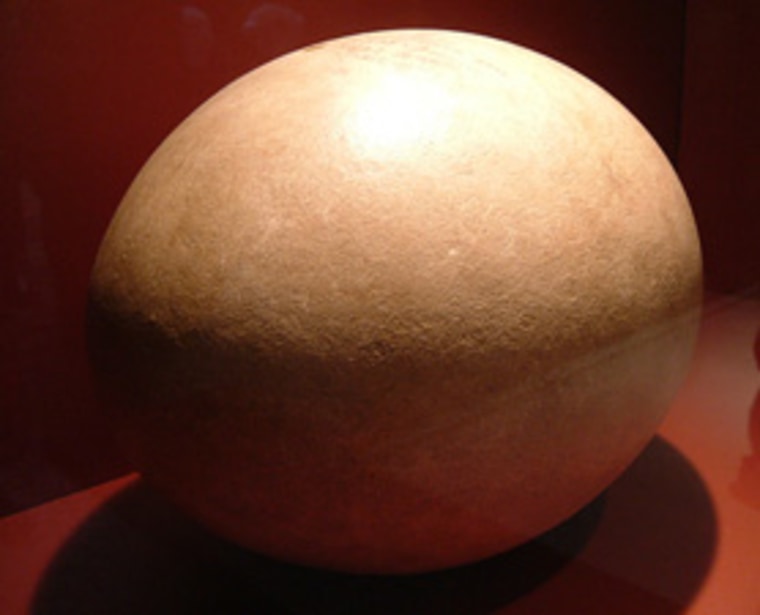In a scientific breakthrough that opens a window to now-extinct animals from the prehistoric past, researchers have just successfully recovered DNA from several fossilized eggshells collected from Australia, New Zealand and Madagascar, according to a new study in the latest Proceedings of the Royal Society B.
While dinosaur eggs remain a challenge, the scientists have already collected DNA for the largest bird that ever lived — the elephant bird Aepyornis — that stood around 10 feet tall and weighed around 880 pounds. Attempts to retrieve DNA from elephant bird bone previously failed, so eggshells may prove to be a more reliable source.
In the future, everything from prehistoric penguin eggshells to those of tiny birds could be mined for DNA, particularly since few research limitations seem to exist.
"We were able to obtain DNA from both thin (duck) and thick (elephant bird) eggshells, which suggests that thickness may not play a significant role in the recovery of DNA from eggshells," lead author Charlotte Oskam told Discovery News.
"Furthermore, we were able to isolate DNA from eggshells from three countries, each with very different climate conditions," added Oskam, a researcher at Murdoch University's Ancient DNA Lab.
She and her colleagues obtained DNA from extinct moas and ducks from New Zealand, extinct elephant birds from Madagascar, and an emu and owl from Australia. The oldest eggshell belonged to an emu that lived 19,000 years ago.
Basic materials within eggshells — calcium carbonate and an organic matrix — break down very slowly, helping to explain why shells don't compost well. The structure wards off decay, which protects contents right after the egg is first laid, but then facilitates preservation of the eggshell itself over millennia.
Oskam explained that the "moa eggshell has 125 times lower microbial contamination when compared to moa bone. This highlights eggshells as an attractive substrate for ancient DNA work, especially whole genome studies."
She believes that reviving an extinct animal is unethical, so cloning of now-extinct birds is unlikely. She hopes, however, that the gathered genetic information might provide better evolutionary histories for extinct species. It could also enable researchers to non-invasively investigate the past biodiversity of many birds, including modern ones, like penguins.
Oskam suspects eggs retrieved from cold environments, such as in the Arctic and Antarctica, could lead to "DNA of much greater antiquity."
Many dinosaur eggs have been found, including entire nests full of eggs. "It would be extremely exciting to extract DNA from a dinosaur egg," Oskam added. But she also suspects that completely mineralized fossils, meaning those that have turned into rocks, pose challenges not yet possible to overcome.
"Since the last dinosaurs died out 65 million years ago, it is safe to say we are nowhere near approaching these sorts of ages," she said.
"It's wonderful that nearly three decades after the first successful analysis of 'ancient' DNA, we are still discovering new sources of paleogenetic data," Beth Shapiro, an assistant professor of biology at Pennsylvania State University, told Discovery News.
"It's particularly exciting that DNA appears to survive for a relatively long time in eggshells preserved in warm environments," Shapiro added. "There is no doubt this discovery will expand both the geographic and taxonomic range of research in our field, and as such will make a considerable impact."
Oskam and her team are already using eggshells to study how people interacted with the giant moa when the Polynesians first came to New Zealand about 800 years ago. The large bird unfortunately may have been an easy dinner on legs, since it went extinct just 300 years later.
